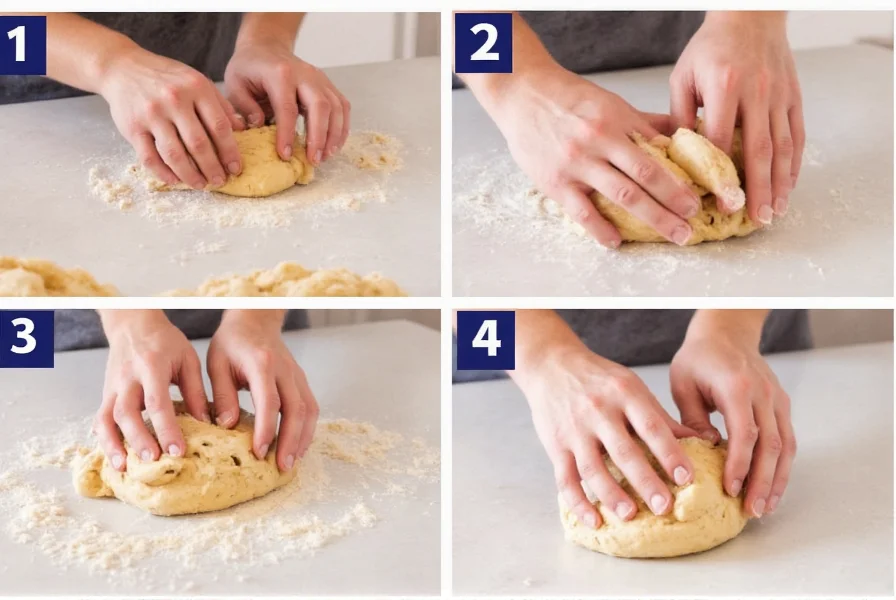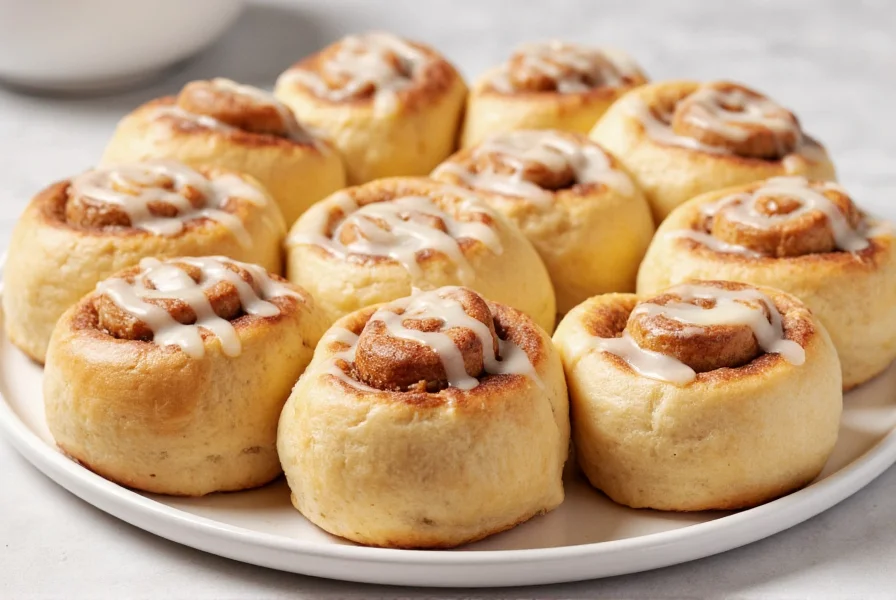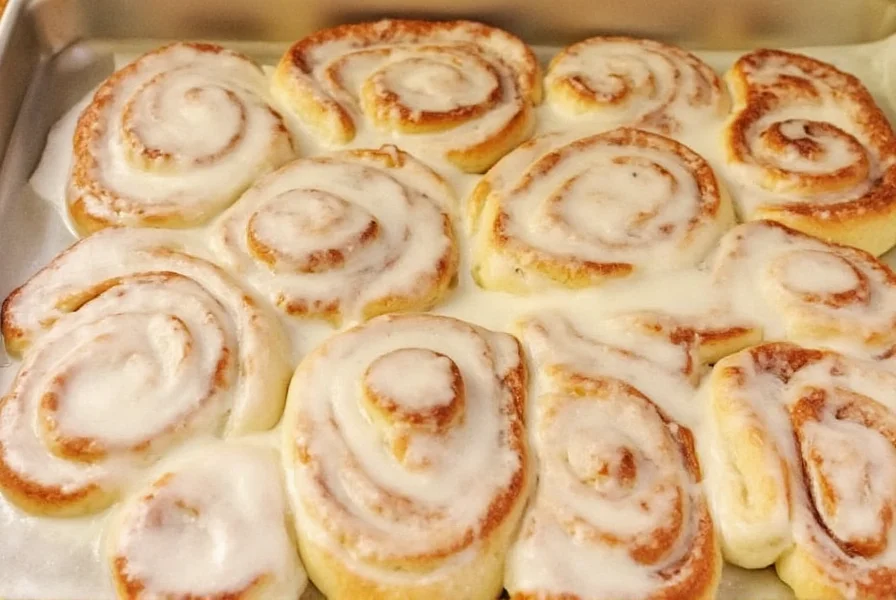The best homemade cinnamon rolls require a simple yeast dough made with flour, sugar, butter, milk, and eggs, rolled with a buttery cinnamon-sugar filling, then baked until golden and topped with cream cheese icing. For perfect results, use room temperature ingredients, allow proper proofing time (1-2 hours), and bake at 350°F (175°C) for 20-25 minutes until golden brown.
Creating bakery-quality cinnamon rolls at home is simpler than you might think. This comprehensive guide walks you through every step to achieve soft, fluffy, and perfectly swirled cinnamon rolls with a rich cinnamon filling and smooth cream cheese icing. Whether you're a beginner baker or looking to refine your technique, these time-tested methods guarantee delicious results every time.
Essential Ingredients for Perfect Cinnamon Rolls
The foundation of exceptional cinnamon rolls starts with quality ingredients. Each component plays a crucial role in texture, flavor, and rise:
| Ingredient | Amount | Why It Matters |
|---|---|---|
| All-purpose flour | 4½ cups (560g) | Provides structure; measure correctly by spooning and leveling |
| Granulated sugar | ½ cup (100g) | Feeds yeast and adds sweetness to dough |
| Unsalted butter | ½ cup (113g), softened | Creates tender texture; must be room temperature |
| Warm milk | 1 cup (240ml), 110°F | Activates yeast without killing it |
| Active dry yeast | 2¼ tsp (7g) | Essential for proper rise and airy texture |
| Eggs | 2 large | Adds richness and helps with browning |
Cinnamon Roll Filling Components
The filling makes or breaks your cinnamon rolls. This balanced ratio ensures perfect sweetness without overwhelming the delicate dough:
- Brown sugar: 1 cup (220g) packed - provides deep caramel notes
- Ground cinnamon: 2-3 tablespoons - use fresh for best flavor
- Unsalted butter: ½ cup (113g), softened - creates a spreadable filling
- Flour: 2 tablespoons - prevents filling from leaking during baking

Step-by-Step Cinnamon Roll Instructions
Dough Preparation (45 minutes + rising)
- Mix wet ingredients: Warm milk to 110°F, then combine with sugar, yeast, and 1 tablespoon flour. Let sit for 5-10 minutes until foamy.
- Combine all dough ingredients: In a stand mixer with dough hook, mix yeast mixture with remaining flour, softened butter, eggs, and salt. Knead for 5-7 minutes until smooth and elastic.
- First rise: Place dough in greased bowl, cover with damp cloth, and let rise in warm place for 1-1.5 hours until doubled in size.
Rolling and Shaping (20 minutes)
- Prepare filling: Mix brown sugar, cinnamon, and flour. Beat softened butter until smooth.
- Roll out dough: Punch down risen dough and roll into 18x12 inch rectangle on floured surface.
- Spread filling: Evenly spread butter over dough, then sprinkle cinnamon-sugar mixture, leaving ½ inch border.
- Roll tightly: Starting from long edge, roll dough into tight log. Pinch seam to seal.
- Cut rolls: Using dental floss or serrated knife, cut into 12 equal pieces (about 1½ inches thick).
Baking Process (30 minutes)
- Second rise: Place rolls in greased 9x13 inch pan, cover, and let rise 30-45 minutes until puffy.
- Bake: Preheat oven to 350°F (175°C). Bake for 20-25 minutes until golden brown and internal temperature reaches 190°F.
- Cool and ice: Let rolls cool 10 minutes while preparing icing, then spread generously over warm rolls.

Proven Baking Tips for Success
Achieving consistent results with homemade cinnamon rolls requires attention to these critical details:
- Yeast activation: Milk temperature is crucial—too hot kills yeast, too cold won't activate it. Use a thermometer for accuracy when learning how to make cinnamon roll properly.
- Dough texture: Properly kneaded dough should be smooth, slightly tacky but not sticky. Adjust flour gradually if needed.
- Proofing environment: Create a warm, draft-free space—try placing dough in oven with light on but no heat.
- Cutting technique: Dental floss creates cleaner cuts than knives, preventing squished rolls that don't rise evenly.
- Baking temperature: 350°F is ideal; higher temperatures cause uneven baking and burnt edges before centers cook through.
Troubleshooting Common Cinnamon Roll Problems
Even experienced bakers encounter issues. Here's how to fix them:
- Dense rolls: Usually caused by too much flour or under-proofed dough. Measure flour correctly by spooning into cup and leveling.
- Filling leaking: Add 1-2 tablespoons flour to filling mixture to absorb excess moisture during baking.
- Pale tops: If rolls aren't browning sufficiently, tent loosely with foil during last 5-10 minutes of baking.
- Over-spreading: Chilling cut rolls for 15 minutes before final proof helps maintain shape during baking.
- Dry texture: Overbaking is the culprit—use a thermometer to check internal temperature rather than relying solely on time.
Variations to Customize Your Cinnamon Rolls
Once you've mastered the basic easy homemade cinnamon roll recipe, try these popular variations:
- Cream cheese swirl: Mix 4 oz softened cream cheese with ¼ cup sugar and spread with cinnamon filling
- Apple cinnamon: Add ½ cup finely diced apples to the filling mixture
- Sticky buns: Place pecans and brown sugar mixture in bottom of pan before adding rolls
- Gluten-free: Substitute with quality gluten-free flour blend and add 1 tsp xanthan gum
- Vegan: Use plant-based milk, vegan butter, and flax eggs (1 tbsp ground flax + 3 tbsp water per egg)
Storage and Reheating Instructions
Proper storage maintains freshness and texture:
- Room temperature: Store covered at room temperature for up to 2 days
- Refrigerator: Keep in airtight container for up to 5 days
- Freezer: Wrap individual rolls tightly and freeze for up to 3 months
- Reheating: Microwave single roll for 15-20 seconds or warm in 300°F oven for 10 minutes for best texture
Frequently Asked Questions
How long should cinnamon rolls rise before baking?
Cinnamon rolls need two rising periods: 1-1.5 hours for the first rise until doubled in size, and 30-45 minutes for the second rise after shaping. The second rise is complete when rolls are puffy and nearly touching in the pan. Proper proofing is essential for light, airy texture in your best cinnamon roll dough from scratch.
Why did my cinnamon rolls come out dense?
Dense cinnamon rolls typically result from too much flour, under-proofed dough, or old yeast. Measure flour correctly by spooning into measuring cups and leveling. Ensure your yeast is fresh and activated properly in warm (not hot) milk. Allow adequate proofing time in a warm environment—dough should double during first rise and become puffy during second rise for soft and fluffy cinnamon rolls.
What's the ideal baking temperature for cinnamon rolls?
The ideal baking temperature for cinnamon rolls is 350°F (175°C). This temperature allows even baking without burning the exterior before the interior cooks through. Bake for 20-25 minutes until golden brown and internal temperature reaches 190°F. For consistent results with your how to make cinnamon roll process, use an oven thermometer to verify your oven's actual temperature.
Can I prepare cinnamon rolls ahead of time?
Yes! Prepare rolls through step 8 (cutting), then cover tightly and refrigerate for up to 24 hours. When ready to bake, remove from refrigerator and let sit at room temperature for 30-60 minutes while oven preheats. This overnight method actually enhances flavor development while fitting cinnamon roll baking into your morning schedule.
How do I prevent cinnamon filling from leaking out?
To prevent cinnamon roll filling from leaking, add 1-2 tablespoons of flour to your filling mixture to absorb excess moisture. Roll your dough tightly but gently, and pinch the seam well. When cutting, use dental floss instead of a knife for clean cuts that seal better. Chilling cut rolls for 15 minutes before the final proof also helps maintain shape during baking.











 浙公网安备
33010002000092号
浙公网安备
33010002000092号 浙B2-20120091-4
浙B2-20120091-4